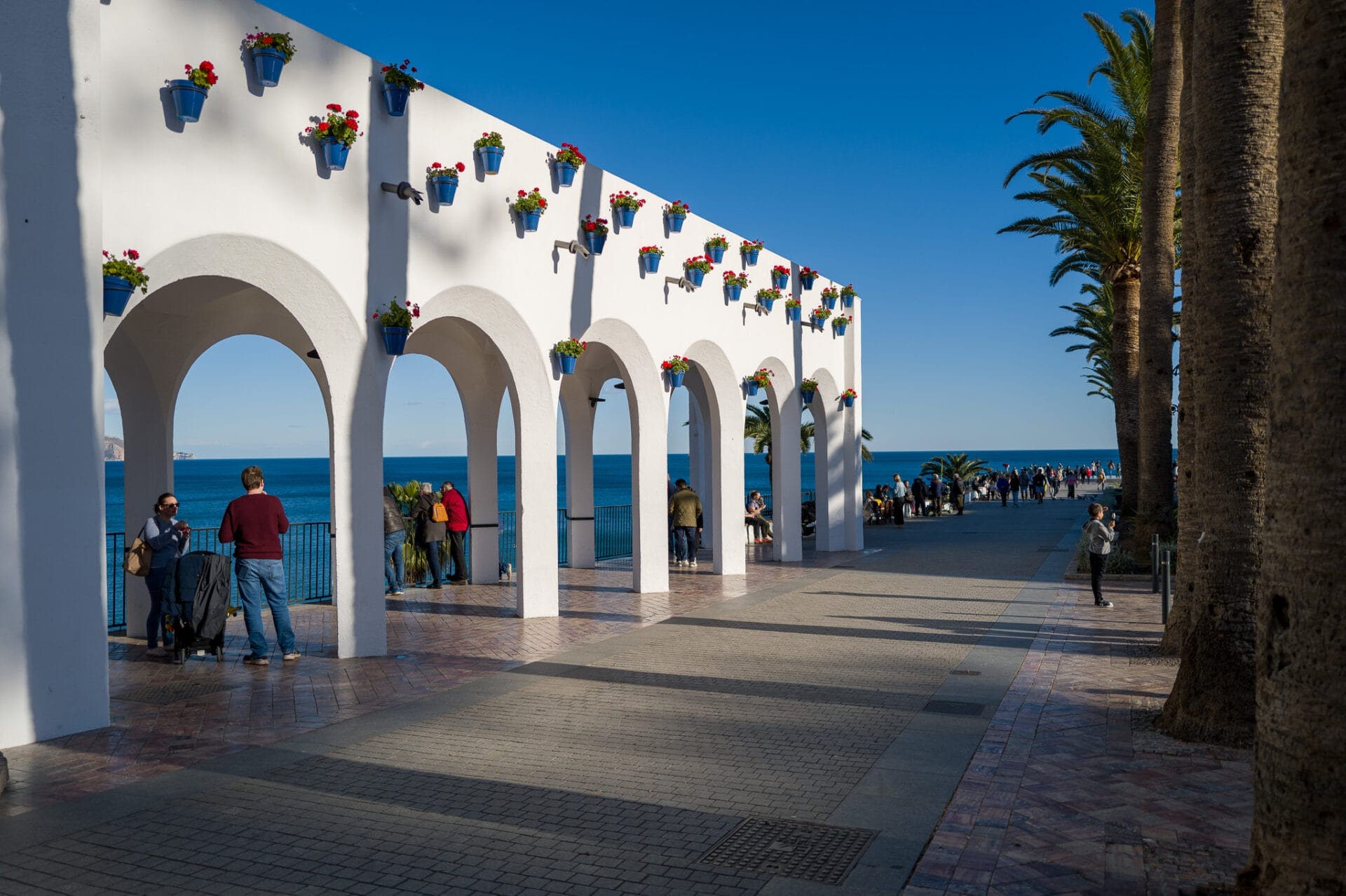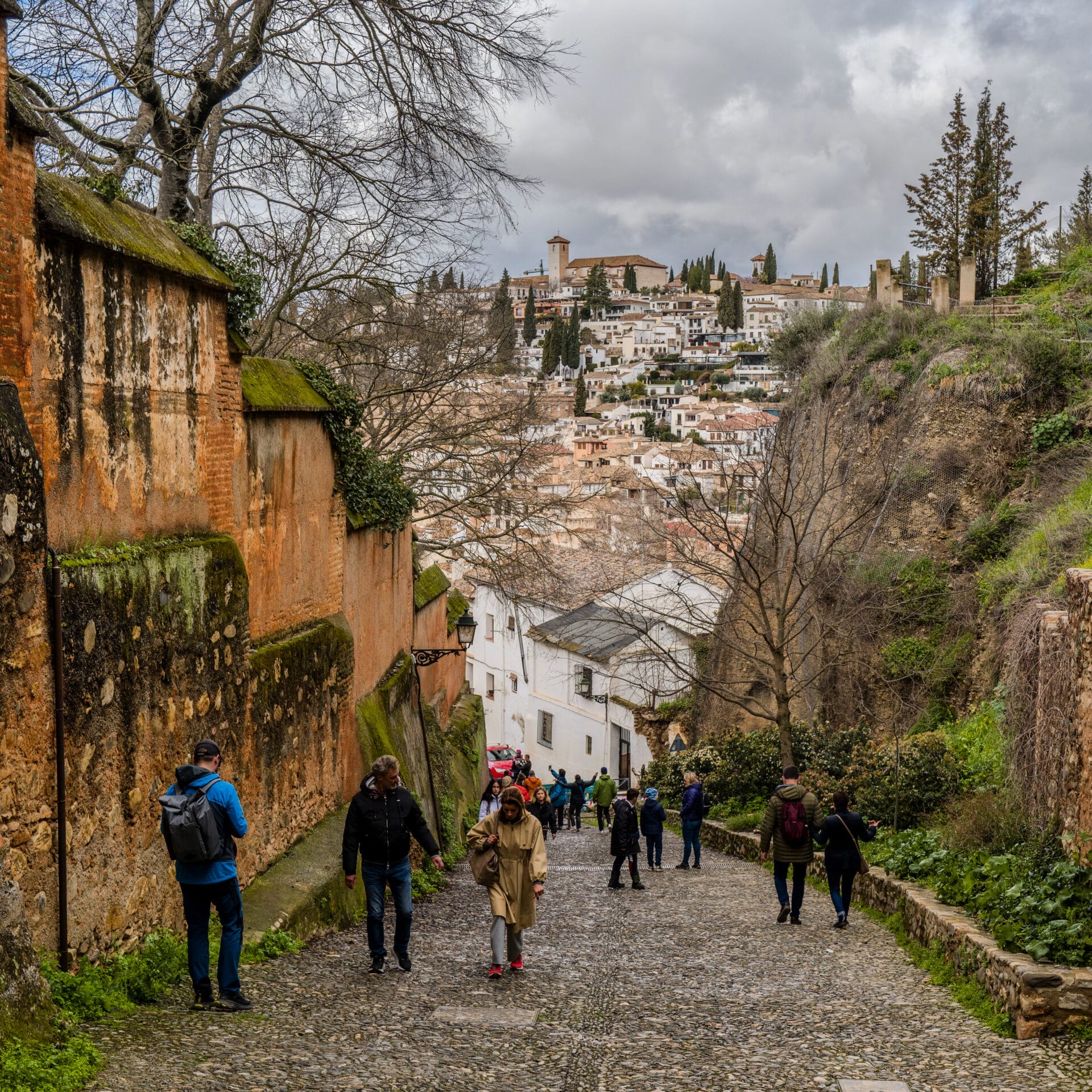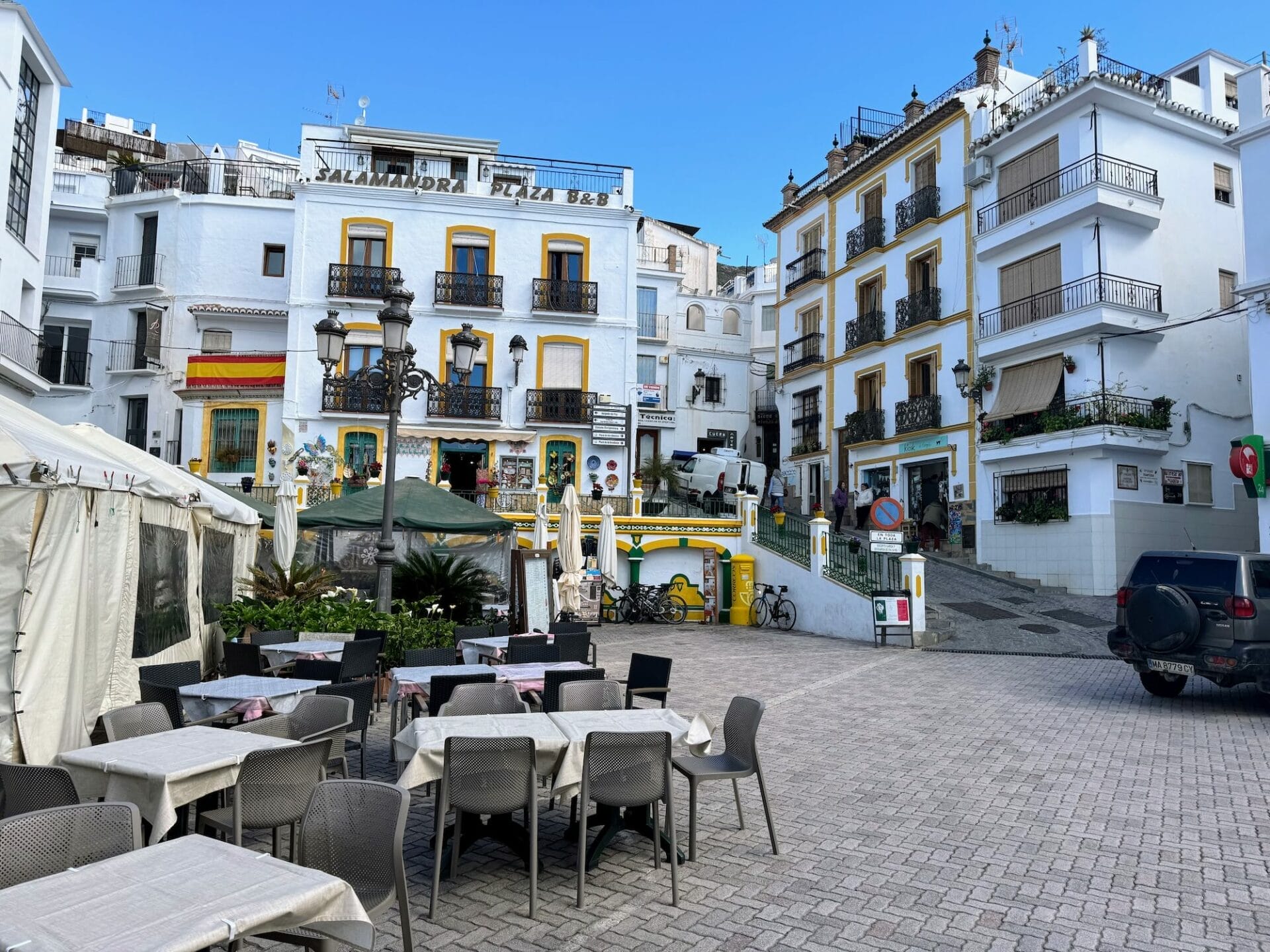Welcome to the sun-drenched shores of Malaga, a radiant gem nestled along the sparkling coastline of Andalusia, Spain. This enchanting city, rich in history and brimming with cultural vibrancy, invites travelers from around the globe to discover its myriad charms. But where is Malaga, you might wonder? Located in the southern part of Spain, it serves as a gateway to the Mediterranean Sea, offering a perfect blend of urban sophistication and seaside tranquility.
Malaga is not just a destination; it’s an experience that begins in its pulsating heart – the Malaga Old Town. Here, the past and present converge in a stunning display of architectural marvels, from ancient Roman ruins to Moorish castles, all set against a modern, lively metropolis. The narrow, cobblestone streets of Malaga Old City whisper tales of bygone eras, leading intrepid explorers on a journey through time.

As the birthplace of the world-renowned artist Pablo Picasso, Malaga boasts an artistic legacy that permeates its very air. The city’s museums and galleries pay homage to its creative son and many other artists inspired by the region’s luminous light and vibrant landscapes.
But Malaga’s allure extends beyond its cultural treasures. The Roman Theatre Malaga, an ancient relic from the city’s Roman past, is a testament to its rich historical tapestry. It invites visitors to step back in time and imagine the spectacles that once captivated audiences in this very spot.
In this introduction to Malaga, we’ve barely scratched the surface of what this Andalusian jewel offers. From its gastronomic delights, which marry traditional Andalusian flavors with contemporary culinary innovation, to its picturesque beaches and lush natural parks, Malaga promises a travel experience like no other. So, let us embark on this cultural odyssey together, exploring the sights, sounds, and flavors of Malaga, Andalusia’s coastal jewel. Welcome to a world where every corner holds a new discovery, and the spirit of Andalusia comes alive.
Chapter 1: Stepping Back in Time – The Historical Heartbeat of Malaga
Malaga, nestled along Spain’s sun-kissed Costa del Sol, is a city where history whispers from every corner, telling tales of ancient civilizations and cultural confluences. This city, one of the oldest in the world, has witnessed the ebb and flow of time, with each era leaving an indelible mark on its architectural, cultural, and social fabric. As we step back in time, we unravel the historical heartbeat of Malaga, a city that has been a silent spectator to the march of civilizations, from the Phoenicians to the modern Spaniards.
The Phoenician Footprints
Our journey begins in the 8th century BC, with the arrival of the Phoenicians, skilled seafarers from the eastern Mediterranean. They established Malaka, a trading post that became a nexus for exchanging goods, ideas, and cultures. Though scarce, the remnants of Phoenician Malaga whisper tales of a bustling port city that engaged in the trade of precious metals, dyestuffs, and salted fish. This period laid the foundational stone of Malaga’s maritime legacy, a characteristic that has defined the city through the ages.

Roman Rule and Architectural Wonders
The Roman conquest of Malaga in the 3rd century BC marked the beginning of a new era. The Romans introduced architectural innovations, the remnants of which are epitomized by the Roman Theatre. This ancient edifice, rediscovered in the 1950s, is a testament to Malaga’s vibrant public life under Roman rule. Once a hub of cultural activity, the theatre symbolizes the Roman appreciation for arts and philosophy, elements that have permeated Malaga’s cultural ethos.
The Moorish Majesty
Perhaps the most defining chapter in Malaga’s history was its period under Moorish rule, beginning in the 8th century AD. The Moors transformed Malaga into a flourishing cultural and economic center, with their architectural prowess still dominating the city’s skyline. The Alcazaba, a palatial fortress, and Gibralfaro Castle perched atop a hill, offering panoramic views of the city and the sea, serving as enduring symbols of Moorish architectural and military ingenuity.

Under the Moors, Malaga thrived as a cosmopolitan city where Muslims, Christians, and Jews coexisted and contributed to a rich tapestry of cultural and intellectual exchange. This period also saw the growth of Malaga’s famed gardens, with the introduction of exotic plants and sophisticated irrigation techniques, a legacy that continues to color the city’s landscape.
The Christian Reconquest and Renaissance
The Christian reconquest of Malaga in 1487 opened a new chapter, integrating the city into the burgeoning Spanish Empire. The transition was marked by architectural shifts, with Gothic, Renaissance, and Baroque influences permeating the city’s edifices. The Malaga Cathedral, a Renaissance and Baroque architecture masterpiece, embodies the artistic and spiritual aspirations of post-reconquest Malaga.
A Journey Through Time
Today, Malaga stands as a vibrant city that celebrates its multifaceted history. From the Phoenician ruins to Roman theatres, Moorish castles, and Renaissance cathedrals, the city is a living museum, each layer of its history offering insights into the civilizations that shaped it. As we walk the streets of Malaga, we tread on the paths of ancient merchants, Roman actors, Moorish kings, and Renaissance architects, each step a journey through time, uncovering the historical heartbeat of this mesmerizing city.
In Malaga, history is not just remembered; it is lived and breathed, making it a city that truly encapsulates the essence of Spain’s rich and diverse past.

Chapter 2: Uncovering the Roman Legacy
The Roman Empire, spanning from the 8th century BC to the 5th century AD, is renowned for its profound influence on the world, aspects of which continue to resonate in contemporary society. This chapter delves into the enduring legacy of Rome, exploring how its innovations in governance, engineering, and culture have shaped modern civilization.
Governance and Law
Rome’s most enduring legacy to the modern world is its legal system. The principles in Roman law, especially the concepts of natural law, civil rights, and legal representation, underpin the legal systems of many contemporary democracies. The Roman Republic, with its intricate balance of powers among different branches of government, has inspired the constitutional framework of numerous modern states. The idea of a senate, the concept of citizenship, and the practice of electing representatives have their roots in Roman political philosophy.
Architectural and Engineering Marvels
Roman engineering and architectural innovations have left a lasting mark on the world. The extensive network of Roman roads, aqueducts that transported water over vast distances, and monumental structures like the Colosseum and Pantheon demonstrate Rome’s engineering prowess. These feats showcase Roman ingenuity and set the foundation for modern civil engineering and architecture. Concrete, vaults, and arches have influenced contemporary building techniques, allowing large and durable structures to be constructed.

Language and Literature
Latin, the language of the Romans, has evolved into the Romance languages: Spanish, Portuguese, French, Italian, and Romanian. Latin remains a foundational vocabulary element in law, science, and academia. Roman literature, encompassing works of poets like Virgil and Ovid and philosophers like Seneca and Marcus Aurelius, continues to inspire and educate. Their exploration of human nature, ethics, and governance resonates with modern readers, reflecting on the universality of Roman thought.
Contributions to Art and Culture
Roman art and culture have significantly influenced Western art, particularly in sculpture, painting, and mosaic work. The portrayal of realistic human figures, political propaganda through art, and the development of portrait busts have shaped Western art’s evolution. Roman mythology, with gods and goddesses like Jupiter, Venus, and Mars, has permeated various aspects of modern culture, from literature and movies to the names of planets in our solar system.
System of Numerals and Calendar
The Roman numeral system, though no longer used for everyday calculations, remains in use for certain applications, such as numbering the chapters of books or denoting years on monuments. The Julian calendar, introduced by Julius Caesar, and its refinement into the Gregorian calendar underscore Rome’s impact on measuring and understanding time.
The legacy of Rome is a testament to the empire’s vast influence on the development of Western civilization. From the legal and political frameworks that govern our societies to the architectural marvels that stand to this day, the Roman Empire’s contributions are a fundamental part of the fabric of modern life. Through preserving Roman history, literature, and art, we continue to learn from and be inspired by the achievements of one of history’s most remarkable civilizations.
Chapter 4: Gastronomic Delights – Savoring Andalusian Flavors
The culinary landscape of Malaga, a city steeped in history and culture, offers a delectable journey through the rich tapestry of Andalusian flavors. Here, every bite tells a story, each dish reflecting the region’s bountiful produce, seasoned with centuries of culinary traditions. As we embark on this gastronomic adventure, we uncover the essence of Andalusian cuisine, a delightful fusion of the fresh and the flavorful, the simple and the sublime.

From the Sea to the Mountains: A Bounty of Flavors
Nestled between the Mediterranean Sea and the Andalusian mountains, Malaga enjoys access to a diverse range of ingredients that form the backbone of its culinary heritage. The Mediterranean gifts Malaga with an abundance of seafood, from succulent sardines to flavorful anchovies, each prepared with a simplicity that accentuates their natural taste. The hinterland, on the other hand, offers a variety of meats, vegetables, and fruits, each adding its unique flavor to the Andalusian culinary palette.
Tapas: A Culinary Expedition in Bite-Sized Delights
No exploration of Malaga’s gastronomy is complete without indulging in tapas, the quintessential Spanish culinary tradition. These small, savory dishes offer a window into the heart of Andalusian cuisine, inviting diners to sample an array of flavors in a single meal. From the classic ‘gambas al ajillo’ (garlic prawns) to the innovative ‘espetos’ (sardines skewered and grilled over an open flame), tapas in Malaga are not just food; they are a social experience, a way of life.
The Sweet and the Savory: Malaga’s Culinary Dualism
Andalusian cuisine is a dance of contrasts, where the sweet meets the savory in an enchanting culinary dualism. Dishes like ‘ajo blanco’, a cold almond soup, embody this blend, combining the nutty flavors of almonds with the sweetness of grapes. Similarly, ‘salmorejo’, a thicker cousin of gazpacho, marries the freshness of tomatoes with the richness of ham and eggs, creating a dish that is as complex as it is comforting.
Malaga’s Markets: Where Local Flavors Come Alive
To truly savor the flavors of Malaga, one must venture into its local markets, vibrant hubs of activity where the freshest produce meets the artisanal craftsmanship of local vendors. The Atarazanas Market, with its stunning 19th-century architecture, offers a sensory overload, from the colorful displays of fruits and vegetables to the aromatic spices and freshly caught seafood. Here, visitors can experience the ingredients that form the essence of Andalusian cuisine, each stall a testament to the region’s agricultural and culinary bounty.

A Toast to Andalusian Wines
No meal in Malaga is complete without a glass of local wine, an integral part of Andalusian gastronomy. From the sweet ‘moscatel’ wines to the dry ‘fino’ sherries, the wines of Malaga are as varied as the landscape from which they hail. Each sip offers a taste of the region’s sun-drenched vineyards, a perfect complement to the rich flavors of Andalusian cuisine.
As we conclude our gastronomic journey through Malaga, we are left with a palette enriched by the flavors of Andalusia, a region where food is not just sustenance, but a celebration of life’s simple pleasures. From the bustling markets to the cozy tapas bars, Malaga invites you to savor the essence of Andalusian cuisine, a journey that delights the senses and nourishes the soul.
Chapter 5: Malaga’s Natural Escapes – Beaches and Beyond
Malaga, a gem on Spain’s Costa del Sol, is renowned for its rich cultural tapestry and breathtaking natural landscapes. This chapter delves into Malaga’s myriad of natural escapes, from its sun-kissed beaches to the lush hinterlands that beckon the adventurous at heart.
Beaches: A Coastal Sanctuary
Malaga’s coastline is a mosaic of picturesque beaches, each with its unique charm. The city’s beaches, such as La Malagueta and El Palo, are celebrated for their golden sands and crystal-clear waters, making them perfect for sunbathing, swimming, and various water sports. Beyond the urban beaches, the Costa del Sol boasts hidden coves and tranquil bays, like Cala del Moral and Playa de Maro, offering serene retreats away from the bustling crowds.
Beyond the Beaches: The Great Outdoors
Malaga’s allure extends beyond its stunning shores to encompass a diverse range of natural landscapes that cater to outdoor enthusiasts of all stripes.
- Caminito del Rey: Once known as the world’s most dangerous walkway, this path has been restored for safe exploration. It meanders through the dramatic gorges of El Chorro, offering unparalleled views of the rugged terrain and turquoise waters below.
- Montes de Malaga Natural Park: A verdant oasis just a short drive from the city center. This park is a haven for hikers, mountain bikers, and nature lovers, featuring dense pine forests, scenic trails, and hidden waterfalls.
- El Torcal de Antequera: A UNESCO World Heritage site, this natural reserve is famed for its surreal limestone formations, sculpted over millions of years. Its Martian landscapes are a playground for geology enthusiasts and offer some of the best stargazing opportunities in the region.
- Sierra de las Nieves: This biosphere reserve is a treasure trove of biodiversity, boasting vast forests of Spanish fir, deep ravines, and the highest peaks in the province. It’s a sanctuary for endangered species like the Spanish ibex and offers countless trails for trekking and bird watching.

Connecting with Nature: Sustainable Practices
As Malaga embraces its role as a premier tourist destination, it also faces the challenge of preserving its natural beauty. The chapter discusses the importance of sustainable tourism practices in conserving these natural spaces for future generations. Initiatives include regulated access to sensitive areas, promoting eco-friendly activities, and encouraging visitors to leave no trace.
Malaga’s natural escapes offer a refreshing counterpoint to its urban and cultural attractions, showcasing the region’s commitment to preserving its natural heritage. Whether it’s lounging on a sun-drenched beach, trekking through lush forests, or exploring ancient geological wonders, Malaga provides a sanctuary for those seeking to reconnect with nature and experience the great outdoors in all its glory.
Chapter 6: Festivals and Celebrations – The Spirit of Malaga
Malaga, a city renowned for its vibrant atmosphere and rich cultural heritage, truly comes alive during its festivals and celebrations. These events are not just occasions for joy and entertainment; they embody the spirit of Malaga, showcasing its traditions, history, and community ethos. From the exuberant Feria de Malaga to the solemn Semana Santa, each festival tells a story of faith, history, and communal bonds, drawing both locals and tourists into the heart of Malaga’s cultural life.
Feria de Malaga: A Celebration of Joy and Tradition
The Feria de Malaga is the pinnacle of Malaga’s festive calendar, transforming the city into a canvas of color, music, and dance. It commemorates the city’s reconquest by the Catholic Monarchs in 1487, blending historical reverence with contemporary festivity. The fair begins with an awe-inspiring fireworks display, followed by a week of flamenco dancing, traditional music, and bullfights, reflecting the Andalusian spirit. Daytime festivities in the city center, with streets adorned with decorative lanterns and floral arrangements, give way to night-time revelry at the Cortijo de Torres fairground, where the celebration continues until dawn.
Semana Santa: A Solemn Tribute to Faith
Semana Santa, or Holy Week, starkly contrasts the Feria’s exuberance, marking a period of profound religious observance. Malaga’s streets become the stage for solemn processions narrating Christ’s Passion. Brotherhoods and fraternities, clad in traditional robes, carry elaborate thrones bearing religious icons, accompanied by the haunting sounds of marching bands and saetas, flamenco-infused religious hymns. These processions are not just religious rituals but deeply emotional experiences for participants and onlookers, reflecting the community’s spiritual depth and historical continuity.

Carnival in Malaga: A Pre-Lenten Revelry
The Carnival of Malaga, held before Lent, is a festival of creativity, satire, and liberation. It’s a time when the city’s streets are filled with costumes, parades, and music, allowing people to express themselves freely and playfully critique society. The highlight is the “Battle of Flowers,” where floats parade through the city, and the election of the Carnival King and Queen showcases the community’s sense of humor and penchant for spectacle.
Noche en Blanco: A Night of Culture and Art
Noche en Blanco, or White Night, is a relatively new addition to Malaga’s festival scene but has quickly become a beloved event. For one night, cultural spaces across the city, from museums to historical sites, open their doors for free, hosting exhibitions, performances, and workshops. It celebrates Malaga’s artistic and intellectual vitality, inviting residents and visitors to explore the city’s cultural richness under the stars.
The Essence of Malaga Through Festivity
The festivals and celebrations of Malaga are windows into the city’s soul. They reveal a community that honors its past, celebrates the present, and welcomes the future with open arms. These events are not just for entertainment; they are rituals that knit the fabric of Malaga’s society, strengthening communal bonds and reaffirming the city’s identity. Through its festivals, Malaga invites the world to partake in its joy, sorrow, and pride, offering a unique blend of tradition and modernity that defines the spirit of this enchanting city.

Enchanted Oasis: The Artistic Soul of Parque de la Alameda in Malaga
Nestled in the heart of Malaga, the Parque de la Alameda offers a tranquil oasis amidst the bustling city life, making it a must-visit destination for travelers exploring this vibrant Andalusian city. As you stroll through the lush avenues of the park, you’re embraced by the cool shade of towering tropical trees and the vibrant colors of meticulously maintained flower beds, creating an atmosphere of serene beauty that captivates the senses.
Discover the Enchantment of Parque de la Alameda in Malaga, Spain
A highlight of Parque de la Alameda is the “Ninfa del Cántaro,” a mesmerizing fountain that has become one of the park’s most iconic features. This exquisite sculpture, depicting a nymph gracefully carrying a water jug, is a testament to the artistic heritage permeating every corner of Malaga. The fountain, with its gentle cascades of water, offers a soothing backdrop for visitors as they immerse themselves in the peaceful ambiance of the park.

Beyond its natural beauty and artistic allure, Parque de la Alameda serves as a cultural crossroads where locals and travelers alike gather to enjoy moments of relaxation and leisure. It’s a place where you can observe the daily life of Malaga’s residents, from families enjoying a sunny afternoon together to artists capturing the scenic beauty on canvas.
The park’s pathways lead visitors through Malaga’s rich history and contemporary charm. Along the way, you’ll encounter a variety of statues and monuments that celebrate notable figures and events in Andalusian history, adding layers of depth and intrigue to your visit.
Parque de la Alameda is not just a green space; it’s a vibrant part of Malaga’s urban landscape, offering a delightful escape from the hustle and bustle of city life. Whether you’re seeking a quiet spot to unwind, a picturesque setting for a leisurely walk, or simply a chance to connect with the artistic soul of Malaga, the park promises an experience that will leave you enriched and inspired.
For travelers visiting Malaga, a stop at Parque de la Alameda, with its enchanting “Ninfa del Cántaro” and lush surroundings, is an opportunity to experience the city’s natural beauty, artistic heritage, and the warm spirit of its people. It’s a reminder of the simple pleasures that make travel so rewarding and a testament to the enduring charm of Malaga, Spain.
Chapter 8: Practical Tips for the Ultimate Málaga Experience
Embarking on a journey to Málaga, a jewel in the crown of Spain’s sunny Costa del Sol, promises an unforgettable experience. With its rich history, vibrant culture, and breathtaking landscapes, Málaga offers something for every traveler. Here are some practical tips for the ultimate Málaga experience to ensure you make the most of your visit.
1. Best Time to Visit
Málaga enjoys over 300 days of sunshine a year, making it a year-round destination. However, the ideal time to visit is spring (March to June) or fall (September to November). These months offer pleasant weather, fewer crowds, and the opportunity to attend local festivals.
2. Getting Around
Málaga’s compact city center is best explored on foot, allowing you to soak in the vibrant atmosphere and discover hidden gems. The city boasts an efficient public transport system for longer distances, including buses, trains, and a metro service. Consider purchasing a multi-trip transport card for convenience and savings.
3. Accommodation
From luxury hotels to cozy hostels, Málaga offers various accommodation options to suit all budgets. Booking in advance is recommended, especially during peak seasons and festivals. For an authentic experience, consider staying in a traditional Andalusian guesthouse.
4. Eating Out
Málaga’s culinary scene is a delightful blend of traditional and modern. Try local specialties such as espetos (sardines skewered and grilled over a wood fire), gazpacho, and Malaga-style fried fish. For a unique dining experience, explore the Atarazanas Market, where you can savor fresh local produce and tapas.
5. Cultural Etiquette
Understanding and respecting local customs will enrich your visit. Greetings often involve a friendly handshake or two kisses on the cheek. Tipping is customary in restaurants and bars, with 5-10% of the bill being a typical amount.
6. Language Tips
While many locals speak English, especially in tourist areas, learning a few basic Spanish phrases will go a long way in enhancing your experience and connecting with residents. Simple phrases like “Hola” (hello), “Gracias” (thank you), and “¿Dónde está…?” (Where is…?) are useful starters.
7. Safety First
Málaga is generally a safe city, but as with any popular tourist destination, it’s wise to stay alert and safeguard your belongings. Avoid carrying large amounts of cash and be cautious in crowded places to prevent pickpocketing.

8. Day Trips and Excursions
Málaga serves as an excellent base for exploring the surrounding areas. Consider day trips to the picturesque white villages of Andalusia, the stunning Caminito del Rey, or the historic cities of Granada, Nerja, Frigiliana, Competa, Ronda, Granada and Seville.
9. Enjoy the Beaches
Málaga’s coastline boasts beautiful beaches ranging from bustling city beaches to secluded coves. Spend a day relaxing on the sands of Malagueta Beach or venture further to the tranquil beaches of Nerja.
10. Embrace Local Festivals
Málaga’s calendar is filled with vibrant festivals. Plan your visit around events like the Feria de Málaga in August or the Holy Week processions in spring to experience the city’s rich cultural traditions.
By following these tips, you’re set to have an enriching and memorable experience in Málaga. Whether wandering through the historic streets, indulging in the local cuisine, or soaking up the sun on the beach, Málaga promises an adventure that will stay with you long after you return home.

Conclusion: Malaga – Andalusia’s Treasure Awaiting Your Discovery
As our journey through the enchanting city of Malaga comes to a close, it’s clear that this Andalusian treasure offers more than just a destination; it presents a mosaic of experiences, each more vibrant and captivating than the last. Malaga, with its rich tapestry of history, art, cuisine, and natural beauty, stands as a testament to the enduring spirit of Andalusia, inviting travelers from all walks of life to discover its many wonders.
From the cobblestone streets of Malaga Old Town to the ancient Roman Theatre, each step through this city is a step through history, where centuries-old stories are etched into the very stones beneath your feet. Malaga’s festivals and celebrations burst with the joy and passion of its people, offering a glimpse into a culture that is both deeply rooted in tradition and enthusiastically embracing the present.
The culinary delights of Malaga serve as a savory invitation to explore Andalusia’s rich gastronomic landscape, where each dish celebrates local flavors and ingredients. And beyond the city’s borders, Malaga’s natural escapes beckon with open arms, offering serene beaches, rugged mountains, and lush countryside to explore.
Malaga captures the hearts of travelers not just for its tangible beauty and heritage but for the warmth of its people, who welcome visitors with open arms and stories to share. It is a city where every visit feels too short, and every departure leaves you yearning for more.
In Malaga, the past and present coalesce into an unforgettable experience, a treasure trove of memories waiting to be made. Whether you’re basking in the sun on a Mediterranean beach, marveling at architectural masterpieces, or reveling in the city’s festive spirit, Malaga promises a journey that will enchant, inspire, and transform.
So, as we bid adieu to this Andalusian gem, remember that Malaga is not just a place to visit; it’s a world to be discovered, a treasure awaiting your discovery. Let the spirit of Malaga call you back repeatedly, for each visit unveils new secrets, joys, and reasons to fall in love with Andalusia’s coastal jewel. Find more travel posts about Andalusia
Official Malaga Tourism Website
Malage Map:
Afficher une carte plus grande






